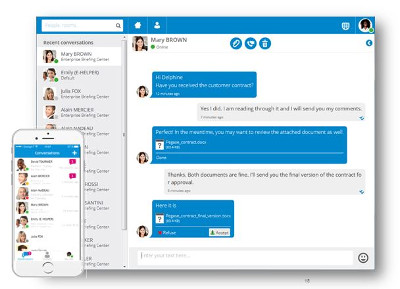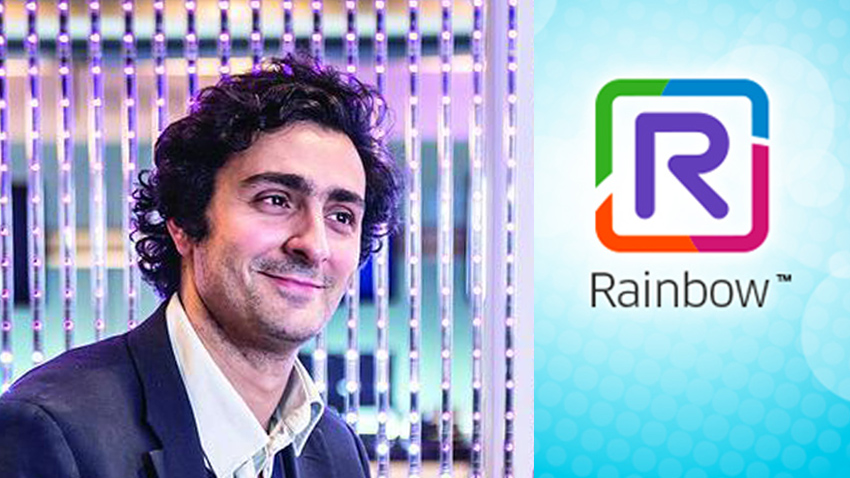The app is dead. Long live the app.
Well, not quite. But let’s put it another way – has all the talk about apps perhaps gone a little far? Like the famous Apple “there’s an app for that” ad, has the UC industry been drawn into viewing apps as a modern day cure-all for all communications ills? Do we spend too much time focusing on the tools, using them like sticking plasters to cobble together business communications solutions, rather than focusing on the needs first, and then looking how best to meet them?
This is the view of Yacine Mahfoufi, head of digital marketing at Alcatel-Lucent Enterprise (ALE). “We don’t talk about apps,” he explains. “If we talk about apps, we are already not addressing the company concerns. What is important is the service and how it is perceived by the different personas of a company: a mix of values and personas”
You cannot, in other words, simply deploy one app or another and expect to reap the best results across a company because a company is not a single, homogenised entity. Within any single business, you have a range of people, a range of roles, and range of perspectives, priorities and needs.
Strategic vision
From the CEO making the broadest strategic decisions, to the end user concerned primarily with how any new technology impacts on their day to day work, digital transformation means different things to different people in a company. For Yacine, introducing something like a team collaboration platform is not simply a case of launching a new application. It has to be approached with a view to meeting the widest possible range of needs with a whole business strategic vision.
“Digital transformation typically involves the modernisation of every facet of an organisation, from back office operations to customer interactions, with the end goal of connecting multiple, disparate processes,” he said.
“Changing the fundamental nature of an organisation, how they work and how they deliver products and services to consumers, a digital transformation is about changing the way people work by modernising their processes and communications tools.
“It is about using technology as a tool to improve the experience of connected customers, increase employee efficiency, encourage innovation and accelerate decision making. For most companies, the objective of a digital transformation is to bring mobility, simplicity, collaboration, agility, innovation and efficiency to their operations.
“In addition to technology improvements, digital transformation is also about transforming organisational structures and business models. And the desired results are improved revenue models and increased profitability, while offering consumers more options and making it easier to do business with these companies.”
Compelling reasons
While important, the tools used to achieve these goals, the apps themselves, are only a means to an end. Software tools in themselves will not achieve positive transformational changes in how a business operates, unless they are deployed as part of a wider, cohesive strategy.
Yacine also believes this is an error many companies make when it comes to user adoption of new technology. Without a clear, compelling, well articulated strategic case for introducing new platforms and tools, the different personas within an organisation will always be prone to wonder what the point is.
Yacine said: “The main way to ensure user adoption is to understand the reasons why UC&C rollouts fall short of forecasts and expectations – because there were no compelling reasons, and workers did not find an interest in these apps, or because there was too much complexity and too many features that were not designed for simplicity.”
With its own team collaboration solution, Rainbow, ALE tried to do things differently to avoid these very issues. Rather than build a typical app-based UCaaS product, ALE went down the CPaaS route – communications platform as a service. With an open source infrastructure, Rainbow allows clients to add communications and collaboration tools to existing IT solutions, rather than build a separate UC stack.
The key idea is that it is therefore much more adaptable to broader business needs, pushing the focus to the end results of what the solution can achieve, not what each app is capable of.
User value
“In developing Rainbow, we focused more the user values/benefits perception than on reinvention of yet another UC tool,” said Yacine. “User adoption relies on the user’s perception that the service is helping them gain time. It is not about productivity only, it is also about user impatience management (the ‘consumer world’ effect). The only real perceived benefit: does the solution really help me be more efficient, or do I spend my time understanding how it works?

“The ‘stickiness’ of a solution relies on business process integration. It is important to provide easy integration. Analytics allow measurement and enable a quick reaction to improve the user experience, in order to meet the user value/benefit perception.”
Again, in isolation, an app can do very little for overall business performance. It is how it fits in with wider processes, overall performance, and the value perception of a diverse group of stakeholders which will determine the impact it has.
Bringing this back to team collaboration, Yacine is sceptical about claims that all-in-one collaboration platforms are about to replace older modes of communication like email. “Email certainly has great days ahead,” he said.
“However, email has reached its limit when it comes to having interactive and collaborative conversations. We don’t want to follow the trend of the ’email killers’, we want to provide straightforward capabilities integrated with existing email to complement and enrich the conversation. So a user may want to switch from email to team collaboration and keep consistency and thread history – this is possible with Rainbow.”
The message, then, is one of keeping all possibilities open, and bending the technology to what people want, rather than dictating what is possible through the technology.







